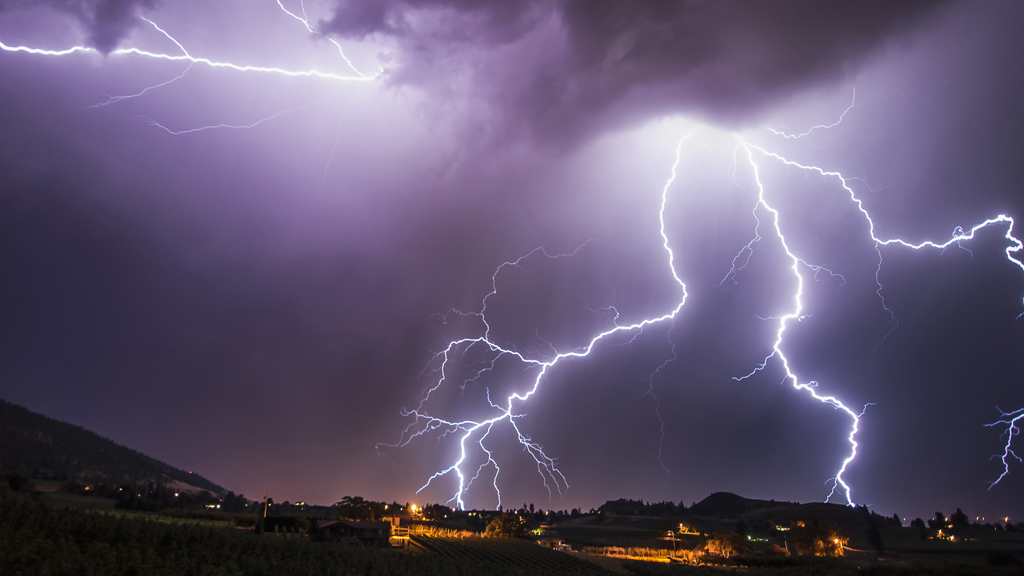Solar wind ‘increases lightning on earth’
 Liam Dutton
Weather Presenter
Liam Dutton
Weather Presenter
Research published in the journal Environment Research Letters suggests that there is a link between the activity of the sun and lightning on earth.

Scientists from the University of Reading have found that when there is an increase in the speed of the solar wind, and thus the number of charge particles entering earth’s atmosphere, the number of lightning strikes recorded increases.
Bursts of solar wind can typically send charged particles towards earth at 895,000 to 4 million miles per hour.
These charged particles are more commonly renowned for causing the spectacular displays of the Aurora Borealis, or Northern Lights in the northern hemisphere.
However, this research offers evidence that they also affect lightning activity, which would subsequently influence the weather.
Information from Nasa’s Advanced Composition Explorer spacecraft was used to measure the variation in the speed of the solar wind towards earth.
This was then compared with the number of lightning strikes recorded across northern Europe by the Met Office’s ATD lightning detection network.
A comparison of the results showed a significant correlation between the number of recorded lightning stirkes prior to and after the arrival of high speed solar winds streams.
The average lightning rate for 40 days after the high speed solar wind stream’s arrival was 422, compared to 321 for the 40 days prior to its arrival.
Although this pattern has been identified, the study makes clear that suitable weather conditions to allow lightning to occur need to be present in the first place.
Nevertheless, given the fact that solar wind activity can be predicted in advance, the results may offer potential benefits to forecasting hazardous weather further ahead.
Space weather is a relatively new but rapidly developing area of science, but an area in which The Met Office and NOAA are actively involved in.
The Met Office is already providing forecasts and warnings of the impacts of space weather on UK services and infrastructure into government, and will continue to develop the level of capability the UK requires.
Initial warnings and forecast services will be operational on a 24 hours a day, seven days a week, 365 days a year basis by the beginning of May 2014, with a second phase of services planned for September 2014.
Solar storms are considered as the fourth most serious threat on the National Risk Register and are identified as having potential significant impact on the UK’s critical national infrastructure.
The Sun is in constant flux and the impact of solar activity is more apparent as people become more reliant on technology. Solar flares, coronal mass ejections (CMEs) and solar wind affect a range of technology systems – including as satellites, GPS, power grids and radio communications.
-
Latest news
-
‘SNP as divided and chaotic as Tories’, says Starmer

-
Post Office Inquiry: Chairman intervenes as public gallery scoffs4m

-
Inside Sudan: An unfolding humanitarian catastrophe7m

-
What are the public spending plans for the election promises?3m

-
Michael Matheson faces Scottish parliament suspension over £11,000 iPad bill2m

-




